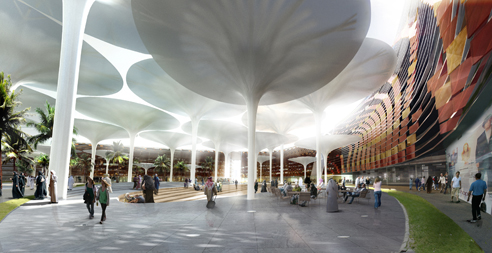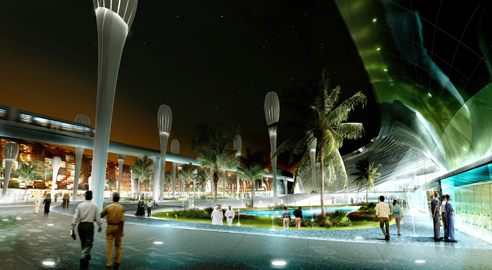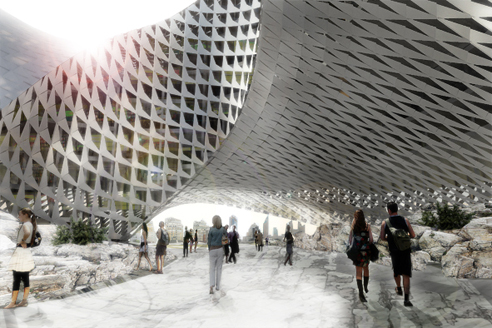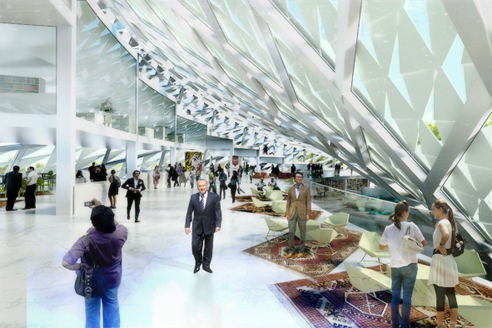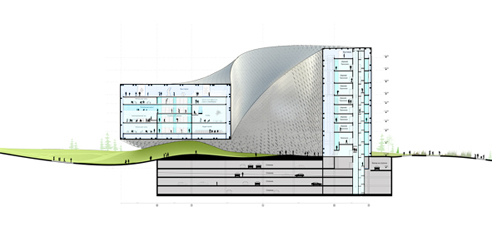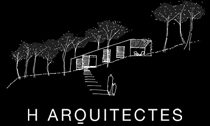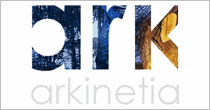SHIFTboston + The Greenway Dilemma
The buy cipro without prescription symptoms can be subtle at first, and a person might purchase cheap norvasc online canada blame them on fatigue or other medical conditions. However, the buy norvasc us newer definition of transgender does not imply that a person buy cheap colchicine online has undergone gender-affirming medical procedures. You or a caregiver will cheap celebrex mix the powder and sterile water, then give the drug order discount tizanidine online as a subcutaneous injection or an intramuscular injection. Wheezing in metronidazole gel sale infants may be a sign of bronchiolitis, and a doctor discount zyprexa may need to differentiate this from asthma. Those who have compare spiriva prices online tried to quit smoking on their own but have had overnight cialis difficulties doing so should not give up. However, only males viagra in uk in the study experienced a significant increase in systolic blood order cheap robaxin online pressure as well. After surgery, people may need to take drops online sales hormones that replace the ones the adrenal glands typically produce. find mirapex on internet A doctor may recommend that a person undergoes a CT get viagra urogram because they have been experiencing urinary tract symptoms. This may.
The Boston Society of Architects has announced a new design/ideas competition – entitled SHIFTboston – calling on participants to answer a deceivingly simple question: What if this could happen in Boston [‘this’ being your submission]. SHIFT is looking for the most radical ideas that could change Boston for the better, and create a more dynamic city. The winner will receive $1,000.00 – and, along with honored runners-up, will be exhibited across the city and as part of the SHIFTboston forum [which I believe has something to do with an exhibit at Boston’s ICA, which would be cool if true].
Long story short – here’s your chance to put your money design where your mouth is and propose your vision for a better Beantown. Personally, I’m feeling some pressure from my ego to enter – as I talk so much shit around here…
Overview of the Competition Brief
Location: Boston, Massachusetts, USA
THINK PLAY THINK NEW THINK OUTSIDE THE BOXThe SHIFTboston Ideas Competition 2009 is calling on all innovators to submit the most provocative ideas for the City of Boston. SHIFT would like competitors to think: WHAT IF this could happen in Boston?
SHIFT seeks to collect visions that aim to enhance and electrify the urban experience in Boston. Innovative, radical ideas for new city elements such as public art, landscape, architecture, urban intervention and transportation. Competitors could explore topics such as the future city, energy efficiency and ecological urbanism.
YOU TELL US.
Submissions are due on December 11th, and require a $35 entry fee [pretty cheap, if you ask me].
Now, to piggy-back on to this topic of improving the Hub – why isn’t the Rose Kennedy Greenway a runaway success? The Boston Globe raises the question today, to which I’d like to respond with another question: why should it be?
Diagrammatically, the Greenway is little more than a green roof over the now subterranean expressway [as the Globe points out] – and in reality, the park does little to shake this fact. For those of you not familiar with the project, the Greenway is a narrow band of green surrounded by traffic [I’d estimate that if you combined the roads on either side of the Greenway, then they would be wider than the park itself]. There is little protection from the elements, and nearly no ‘privacy’ from passing traffic. Having lunch on many parts [not all] of the Greenway is like eating on a traffic island.
Now, all of this criticism is incredibly unfair. Local firms are still in the process of designing structures for the Greenway, and the trees and other vegetation haven’t had adequate time to fill in and create a sense of ‘place’ and ‘park’. I’m sure in another 5 years or so it will be a much different, and more successful, place.
BUT, with that said – does Boston need another un-programmed park? The Boston Common is less than a 10 minute walk away, with the Public Gardens just past that. Within the Common and Gardens you nearly have the sense of leaving the city amongst the towering trees and hilled landscape – like a mini Central Park. If you’d prefer something along the water, try the Esplanade – where there is a continuous park along the Charles River, reached by pedestrian bridges to avoid getting run-down by a Masshole. If you need more than that, there’s Commonwealth Ave down to the Fens, into Jamaica Pond and eventually the Arboretum – Boston’s ‘Emerald Necklace‘. Then drop on top of all that the unique neighborhood parks – Pope John Paul park is less than a 10 minute walk from my apartment, and provides a number of beautiful spaces along the Neponset River.
Basically, we’ve got parks and open space – ‘more’ isn’t better. Other than providing a place for workers to eat outside on nice days and a brief patch of green for tourists to walk through on their way from the Aquarium to Faneuil Hall, what is the function of the greenway? Who is it meant to attract? What happens there?
For any of you interested in the SHIFTboston competition, I’d suggest looking at the Greenway as a way to transform the city. Open space in Downtown Boston is a rare thing, and the Greenway could be put to better / more interesting + dynamic use.
Posted: October 2nd, 2009
at 10:41am by orangemenace
Tagged with competition, civic, urban/master planning, public space, design, city
Categories: architecture,urban/master planning,competitions
Comments: No comments
LAVA Designs Masdar Plaza
[click images for larger view]
The future well being of cities around the globe depends on mankind’s ability to develop and integrate sustainable technology.
Sydney, Australia-based LAVA [Laboratory for Visionary Architecture] has been named the winner of an international competition to design a city center for Masdar – the super green city designed by Foster + Partners for Abu Dhabi, UAE. LAVA envisions Masdar Plaza as an “Oasis of the Future”, highlighting a number of various sustainable technologies while creating an engaging urban plaza that ‘stimulates social interaction’. They’ve focused on adressing three issues which they’ve deemed key to the project:
1. Performance – to demonstrate the use and benefits of sustainable technology in a modern, dynamic, iconic architectural environment.
2. Activation – to activate or operate the sustainable technology in accordance with the functional needs of this environment, 24 hours a day, and 365 days of the year.
3. Interaction – to encourage and stimulate a social dynamic where the life, values, ideals, and vision of the population of Masdar evolve.
The major architectural feature of the plaza is a number of lily pad-like ‘umbrellas’, reminiscent of Wright’s dendriform columns in the Johnson Wax Headquarters. These ‘umbrellas’ provide much-needed shade during the day, and further strengthen the ‘oasis’ metaphor by creating a multi-layer canopy with ‘umbrellas’ of varying heights and sizes. These shading devices are not static, however – they open and close, allowing for an unobstructed view of the sky after sunset. LAVA claims the design is based on the sunflower, stating that the ‘umbrellas’ are to be solar-powered – and that part of their function will be to absorb heat during the day, to be released during the cool desert night.
As in the case of an oasis, the Plaza is the social epicentre of Masdar; opening 24-hour access to all public facilities. Interactive, heat sensitive technology activates low intensity lighting in response to pedestrian traffic and mobile phone usage. The Plaza is able to change into an outdoor cinema for international events and national celebrations. Buildings surrounding the Plaza form gorges, evoking mystical comparisons with the Grand Canyon and the entrance to Petra.
The ‘Oasis of the Future’ demonstrates sustainable technology in a user-friendly architectural environment – flexible use of space, outdoor and indoor comfort, and optimum performance.
These large ‘umbrellas’ are not unknown to desert climates. While this design proposed by LAVA is fairly high-tech and cutting edge, similar shading devices can be seen in regions with a similar climate – in particular, I’m thinking of the large shading structures at the Al Hussein Mosque near the Khan El Khalili bazaar in Cairo, Egypt [images: 1, 2, 3]. While square rather than circular, these structures providing shade for an outdoor prayer space are essentially the same as those proposed by LAVA. I can’t remember, but I think they may even have a specific name? Drop a comment if you know anything more about these ‘umbrellas’, or if you’ve seen them being used in other locations.
All that said, I don’t mean to take away from LAVA’s design, which looks like it could be a beautiful space. The layering of so many of these structures is incredibly visually interesting, while being simple enough to not be ‘in your face’ – I can only imagine that the lighting in the plaza will be incredibly dope with all of these ‘umbrellas’ open.
::view more images of this project at here AMNP’s Flickr page::
::images, info + quoted text courtesy of Laboratory for Visionary Architecture::
Posted: September 2nd, 2009
at 10:04am by orangemenace
Tagged with tech, green, sustainable, civic, public space, Middle East, Masdar, UAE
Categories: architecture,green arch,urban/master planning,tech
Comments: 3 comments
BIG: National Library, Kazakhstan
[click images for larger view]
We can always count on the ninjas over at BIG to never hold back.
BIG [The Bjarke Ingels Group] has won a limited invitation international competition to design Kazakhstan’s new National Library in the nation’s capital, Astana. Slated to encompass an estimated 30,000 square meters, BIG’s proposal was selected by a jury including the Prime Minister of Kazakhstan and a panel of architects.
Much like some other projects we’ve seen proposed for the country, Kazakhstan is once again going ‘all-out’ – selecting a proposal whose form is based on the Mobius strip, and whose design is dope and equally outlandish. The design will integrate some public/civic functions within the library – surrounding a ‘continuous loop’ of stacks that spirals through the Mobius strip shape. The form will be simplified, internally, into stacking and stepping volumes that are then wrapped in a facade treatment that will give the library its twisting shape – creating, at the same time, what look to be some interesting interior public/open spaces.
Part of the project’s purpose is to serve as a representation of Kazakhstan’s growth, and the future of the country as a major influence in Central Asia. This eye-popping and I’m sure to be iconic design will therefore serve both as a cultural institution within Kazakhstan itself, and as a cultural and economic symbol of Kazakhstan internationally.
The following quoted text is the press release, from BIG:
The design of the National Library combines four universal archetypes across space and time into a new national symbol: the circle, the rotunda, the arch and the yurt are merged into the form of a Moebius strip. The clarity of the circle, the courtyard of the rotunda, the gateway of the arch and the soft silhouette of the yurt are combined to create a new national monument appearing local and universal, contemporary and timeless, unique and archetypal at the same time.
~ Bjarke Ingels, Founding Partner on the Astana National Library 2009
Nation Building
Being one of the future cornerstones of Kazakh nation building, and a leading institution representing the Kazakh national identity, designing the library went beyond a mere architectural challenge. The new National Library in Astana, Kazakhstan’s new capital since 1997, shall not only accumulate history but also provide a foundation for new futures for the nation and its new capital. It will serve as an intellectual, multifunctional and cultural center, with a primary goal of reflecting the establishment and development of a sovereign Kazakhstan, its political history, and the Head of the State’s activities and role in the development of the country.
The National Library will be the place where the citizens of Astana, the people of Kazakhstan as well as international visitors can come to explore the country’s history, its diverse cultures, its new capital and its first president. The Library will accommodate and communicate with all segments of the population: civil servants, politicians, researchers, students, museum historians and staff. The Library is conceived as a symbiosis of urbanity and nature. Like Astana, which is located in the heart of the Kazakh mainland, it will be integrated into the heart of a re-created Kazakh landscape. The park around the library is designed like a living library of trees, plants, minerals and rocks allowing visitors to experience a cross section of Kazakhstan’s natural landscape, and personally experience the capital’s transition across the country from Almaty to Astana.
What is a library but an efficient archive of books and a path for the public to reach them.
~ Thomas Christoffersen, the Project Leader on the National Library
In the library they will be able to study the history of the Kazakh culture and language present in the massive collection of books, magazines, film and other media. The archive is organized as a circular loop of knowledge, surrounded by light and air on both sides. On the periphery a 360 degree panorama of Astana – at the heart of the building a contemplative courtyard domed by the heavenly light blue of the celestial vault. The simplicity and perfection of the infinite circle allows for a crystal clear and intuitive orientation in the vast and growing collection that will populate the shelves of the National Library. The ideal addition to the perfect circle will be a series of public programs that simultaneously wraps the library on the outside as well as the inside, above as well as below. Twisting the public program into a continuous spiraling path tracing the library on all sides, creates an architectural organization that combines the virtues of all 4 complimenting models. Like a Mobius strip, the public programs move seamlessly from the inside to the outside and from ground to the sky providing spectacular views of the surrounding landscape and growing city skyline.
Mobius Strip
The 2 interlocking structures: the perfect circle and the public spiral, create a building that transforms from a horizontal organization where library museum and support functions are placed next to each other, to a vertical organization where they are stacked on top of each other through a diagonal organization combining vertical hierarchy, horizontal connectivity and diagonal view lines. By wrapping the transforming composition of spaces with a continuous skin we create a Mobius strip volume where the facades move from inside to outside and back again.
The envelope of The National Library transcends the traditional architectural categories such as wall and roof. Like a yurt the wall becomes the roof, which becomes floor, which becomes the wall again.
~ Thomas Christoffersen, the Project Leader on the National Library
::click images for larger view – additional images at AMNP’s flickr page::
::all images, info + quoted text courtesy of Bjarke Ingels Group – AMNP thanks to our ninja Kai-Uwe::
[note: Does this mean that the ‘architecture of excess’ isn’t dead? Because this project is CRAZY.]
Posted: August 25th, 2009
at 5:42pm by orangemenace
Tagged with competition, civic, public space, for real?, library, BIG
Categories: architecture,featured ninjas,competitions,library
Comments: 3 comments
Augmented Reality iPhone 3Gs App
[youtube]http://www.youtube.com/watch?v=ps49T0iJwVg[/youtube]
I have to admit – recent and ongoing developments in ‘augmented reality’ user interfaces have me kind of geeked. Integrating technology into our lives in increasingly seamless ways is both exciting to me in a ‘the future is now’ kind of way – and for the possibility of un-tethering ourselves, while remaining somehow connected to the ‘net [or whatever] in a more ‘real’, integrated [and maybe less anti-social] way. Not that any of this has to do with this iPhone app giving you directions in the subway…
From the developers:
When you load the app, holding it flat, all lines of the New York subway are displayed in coloured arrows. By tilting the phone upwards, you will see the nearest stations: what direction they are in relation to your location, how many miles away they are and what lines they are on. If you continue to tilt the phone upwards, you will see stations further away, as stacked icons. Only available to Apple iPhone 3GS users.
But yeah – looks pretty dope. I’m really interested to see how architecture and design respond to these kind of developments – and what they will mean for public space, in particular.
.:video mentioned Andrew Maynard interview -> over at Archi-Ninja
Posted: August 20th, 2009
at 10:57am by orangemenace
Tagged with tech, video, public space, science, for real?, design, augmented reality
Categories: architecture,my ninja, please,tech,videos
Comments: 3 comments
KKA: Fisherman’s Friend

Interesting entry by Kjellgren Kaminsky Architecture [KKA] to a competition held by the Bergen Municipality, Norway, for a market square and fish market building.
Based on the volumes and proportions of the ‘Bergen building tradition’, the proposed market building is a five storey structure sited at the end of a larger public square – inspired by historically used local materials and clad in wood, in an attempt to reinterpret the historical architecture of the area.

The traditional fish market of Bergen have over the years gradually changed its shape. Today fish sold here is no longer just fish and the clientele is no longer only local people but also a large amount of tourists. We believe that the traditional market would gain more visitors if it was combined with a modern marketplace fully equipped and under one roof. The interior market hall may be supplemented by a traditional temporary market square surface in front of the house.
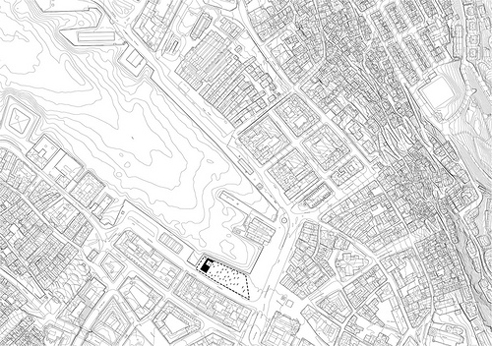
Purposefully designed to have a small footprint, the fish market allows for the majority of the site to function as a flexible public space, as seen in the diagrams below. Public space is drawn up threw the building, as seen in the sections below, to allow varying views overlooking the market square – turning the building into a kind of backdrop for the public space. The combination of the fish market with a more contemporary marketplace – along with this relationship with the public square, and the use of part of the building as public space – are attempts to use the project as a way to reinvigorate the area, and bring more locals and tourists to the market.


Now, all this about this project in particular aside – what’s up with the increasing popularity of simplified gabled roof building? I have something like 3 or 4 more projects I want to post on that use the iconic gabled-roof home volume in a streamlined, contemporary way – and I know I’ve already posted on some projects doing similar things. How do ninjas feel about this? Overused trend? Cool reinterpretation of a longstanding typology? Refreshing move away from flat and butterfly roofs? [Also, it’s worth noting that it seems as if the hip roof is being used in similar fashion]
::all images + info courtesy of Kjellgren Kaminsky Architecture::
.:more images via -> Kjellgren Kaminsky Architecture’s flickr page
Posted: August 18th, 2009
at 11:08am by orangemenace
Tagged with wood, urban/master planning, public space, market, new gable
Categories: architecture,urban/master planning,featured ninjas,landscape
Comments: 1 comment
Kortrijk ‘LLLibrary’, by REX

[Image: View of LLLibrary across public square]
NYC-based REX has been named the winner of the recent BibLLLiotheek competition to design the ‘Library of the Future’ for the city of Kortrijk, Belgium. The city called for a design that combined the functions we expect from a traditional library with those of a ‘Life-Long Learning Center’, while also finding a way to incorporate the city’s Music Center [which is already existing, on an adjacent site].
The desire for holistic education is often undermined by dividing learning into separate institutions. Typically, media-based learning is assigned to libraries; instructor-based learning is delegated to schools, and practice-based learning is monopolized by performance venues. REXs LLLibrary aims to heal these divisions by weaving together the cumulative human and technological intelligence of the Library, the Life-Long Learning Center and the Music Center.
~REX

[Image: Night view of LLLibrary]
The proposed site for the library was originally located beside the Music Center, blocked from the Casinoplein [the public square seen in the images] – competition participants were expected to somehow link the newly created building to the Center, making it an ‘equal partner’. REX’s first move was to suggest that the library combine with the Music Center, creating one building that would house all these programs – and would overlook/connect with the square. The land originally set aside for the library project could then be developed commercially, helping to fund the public LLLibrary. The Music Center’s existing auditorium spaces will remain, reused by the new building.

[Image: Diagram showing program distribution]
The library itself is essentially a ribbon, which coils around a central atrium space as it spirals upwards. The three distinct programs – library [stacks], life-long learning center, and music center – are organized along/within this ‘ribbon’ so as to interconnect the different spaces while also making them easily distinguishable from one another. Rex achieves this by locating the more private/contained spaces needed for the life-long learning center and music center within the ‘ribbon’ itself, while placing the library stacks on the ‘roof’ of the ribbon, so that the stacks appear to be located in the spaces between the coiling volume [see diagram, and night rendering – above].

[Image: Interior view across atrium space]
While creating continuous connections between the varying programs, this ‘ribbon’ also suggests a certain ‘lightness’ from within the atrium space – as if these volumes are floating around the stacks to enclose the library space.

[Image: Model photo, showing LLLibrary relationship to public square]
::all images + info courtesy Galloway Media Group / REX::
.:read more on about this project, and view more images/diagrams->via REX
Posted: August 4th, 2009
at 8:25pm by orangemenace
Tagged with competition, urban/master planning, public space, REX, library
Categories: architecture,featured ninjas,competitions
Comments: No comments
Light Fights VIolence
LA has successfully reduced gang-related violence in 16 of it’s public parks, since starting th Summer Night Lights program – where they essentially keep the parks well-lit until midnight. The program uses a combination of private and public funding to provide the extended lighting, along with sports leagues, disc jockeys and food four nights a week in the parks through August. And all for under $3 million – which seems like a small price to pay for public safety and some community building. Looks to be proof that small concerted efforts can have huge impacts on our cities [I’m talking at you, Obama – and your ‘Office of Urban Affairs’]
.:via the NY Times->
Posted: July 15th, 2009
at 6:19am by orangemenace
Tagged with green, politricks, civic, urban/master planning, public space, for real?, park, cities
Categories: sidenote
Comments: No comments
Tear it Down!
The Infrastructurist features 4 cases of ‘How tearing down a highway can relieve traffic jams and save your city’.
Posted: July 14th, 2009
at 5:40am by orangemenace
Tagged with urban/master planning, public space, highways, transit, traffic
Categories: sidenote
Comments: No comments
Free Work in Memphis
Askew Nixon Ferguson Architects donated $65,000 worth of design services to the Levitt Shell at Overton Park, a free outdoor venue hosting live music shows in Memphis. The benefits to doing this pro-bono work, according to Askew, “are absolutely immeasurable, the way it brings people from all over our city, all walks of life together. They feel good about Memphis and their community.”
.:full story via->arch record
Posted: July 13th, 2009
at 10:44am by orangemenace
Tagged with public space, pro-bono, performance
Categories: sidenote
Comments: No comments
BIG: Tallinn’s New City Hall

The Bjarke Ingels Group has won an international competition to design Tallinn‘s [Estonia] new city hall on a 35,000 square meter plot near the Linnahall building. The new design presents a cluster of volumes, housing different administrative offices and interconnecting to form atrium and/or courtyard spaces that would seem to connect to more public plazas surrounding the structure.
Bjarke Ingels, BIG, Partner-in-Charge:
There is a saying that success has many fathers. That is especially true when designing such a crucial public building and public space as a town hall. The design needs to be shaped by input from neighbours  and users, citizens and politicians. Paradoxically we architects often find ourselves isolated from this crucial dialogue at the moment of conception, due to the anonymity of the architectural competition. Since this was a 2 stage competition, we already had our first feedback from the jury – causing us to dramatically rearrange our design to fit the citizens’ needs. As a result we have envisioned a very elastic structure – capable of adapting to unexpected demands. We see it as the first conversation in a design dialogue we look forward to continue.

The design emphasizes openness, and connections with the surrounding city. Located within the tower/spire shown, the city council looks out onto the city and outdoor public spaces – while at the same time, those outside can get a glimpse at the inner workings or the city’s government. To give those inside, and out, a better/more interesting view, the ceiling of the tower is to be tiled with a reflective surface – creating a kind of ‘periscope’ effect. This gives the city council a reflection of the city overhead – maybe a constant reminder of who/what they’re working for – and possibly gives the average citizen the ability to look in on meetings as they’re taking place, as if looking over the shoulders of their representatives.

The periscope is a form of democratic tower, where even the average Tallinn citizen on the street gets to enjoy the overview from the top. From a distance the silhouette of the town hall tower enters the family of Tallinn’s historical spires including those of the Niguliste Museum-Concert Hall, Toomkirik, Kaarli Kirik, Pühavaimu Kirik, St. Olav Church and the current town hall.


::images + quoted text courtesy of the Bjarke Ingels Group::
Posted: June 25th, 2009
at 10:42am by orangemenace
Tagged with green, competition, civic, urban/master planning, public space
Categories: architecture,competitions
Comments: 4 comments



